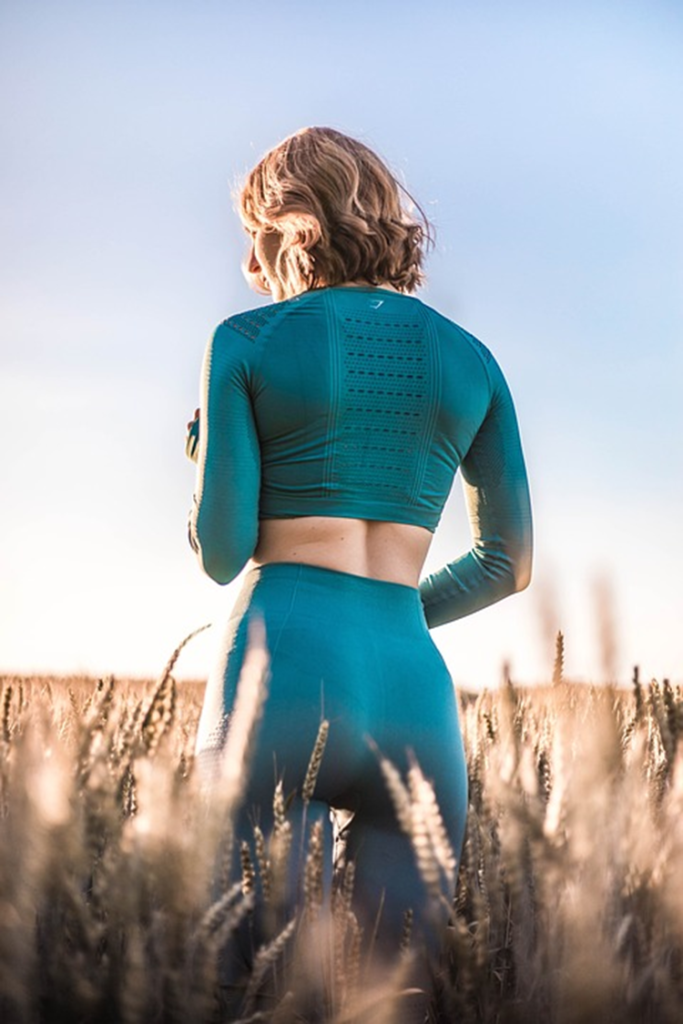Blog
CAN SYNTHETIC TEXTILE EVER REALLY BE SUSTAINABLE?

By Lora O’Brien
Sustainability in fashion is about shopping better, and one way we can change the future of fashion is by choosing the textiles that compromise our fashion garments. While natural fabrics such as cotton, silk, and wool have been renowned for being both ethical and good for the planet, synthetics have been scrutinized, with some claiming that their use in fashion undermines the sustainable fashion movement.
In this article, we’re going to take a look at synthetic textiles and ask: can they ever really be sustainable?

WHAT IS SYNTHETIC TEXTILE?
Synthetic textile is a man-made and is produced entirely from chemicals to create popular fabrics such as polyester, rayon, and acrylic among many others. Synthetic fibers have been used due to the fact they’re durable and cheaper to manufacture, as opposed to natural fibers which are found naturally on our planet with minimal processing needed to turn them into fabrics.
Synthetic fibers are produced by turning chemical monomers into polymers using a chemical reaction that is called polymerization. Sodium hydroxide and carbon disulfide are two of the chemicals commonly used, which are derived from coal, oil, or natural gas.
The liquid from the chemicals is forced through spinnerets (small holes) to produce a filament. As the liquid is released and comes into contact with the air, it cools and forms tiny threads of filament fire. A twisting process takes this and twists the filament into a yarn. At this point, dyes are added before they are woven together to make the fabric, and various other chemicals are often added to make the fabric even softer, smooth, flame-resistant, water-resistant, and stain resistant.
ADVANTAGES OF USING SYNTHETIC TEXTILE?
People tend to think of synthetic textiles as being highly toxic and made from a concoction of chemicals, but there are many advantages to using synthetic fibers. Not only are they highly durable, strong, and long-lasting, but some other positives are:
- Synthetic fibers have good elasticity, making them perfect for swimwear and lingerie.
- They can be made waterproof.
- They don’t wrinkle easily.
- Clothing made from these fibers is cheaper and more readily available compared to some of the more natural fibers.
- Synthetic fibers don’t break down easily.
- They retain their shape and don’t shrink, making them easy to care for.
- They absorb less water and are quick drying.
- They are moth and insect resistant.
As you can see, there is a plethora of advantages to using synthetic textiles and due to the variety of textiles available, the fibers are used across various industries, not only the fashion world. Of course, synthetic is used to make apparel, but they’re widely used in other industries such as construction, the military, and aerospace as well as for medical products, automotive interiors, and marine products.
DISADVANTAGES OF USING SYNTHETIC TEXTILE?
Much like anything, there are also pluses and minuses, and there are some disadvantages to using synthetic textile that can’t be argued. Most validly, at the end of their life, the waste produced by synthetic fibers is not very good for the planet, which is of course worrying. Furthermore:
- when burnt, they can release poisonous gases.
- oftentimes, synthetic materials end up landfilled, and once here, they can take a very long time to break down, with many being non-biodegradable due to the chemicals used in their manufacturing process, which can also leach into the environment.
- They shouldn’t be worn in hot areas, such as kitchens and laboratories, as they melt much quicker than natural fibers.
- They don’t provide as much thermal protection as natural fibers lend.
- They don’t take dyes easily.

TYPES OF SYNTHETIC TEXTILES
- Raylon is an alternative to silk and wool and is made from regenerated cellulose. The fabric has a lustrous appearance, is highly absorbent, and isn’t statically charged. Common uses for it are blouses, dresses, jackets, lingerie, and sportswear.
- Polyester is used for its strength and durability as it’s a very easy fabric to care for. It’s made of polyethylene terephthalate, a durable, soft, and strong fabric that is super quick to dry. It’s wrinkle-free and doesn’t lose its shape. Polyester blends easily with natural fibers, especially cotton or wool to enhance the fabric and make it easier to wash.
- Spandex is a super stretchy fabric, and due to its moisture-wicking, it’s ideal for athletics. It reverts back to its original form even after being stretched so it’s used where permanent elasticity is needed, such as in tights, sportswear, and swimwear. The main consensus for using spandex is for garments that are needed to be tight, clinging to the body while remaining comfortable to wear.
- Acrylic is a fur or wool alternative that is cheaper to produce but just as warm. Made from a petrochemical called acrylonitrile, acrylic is lightweight but strong. It is as soft and warm as wool but it doesn’t absorb water as well. It’s mainly used for clothing such as jumpers and accessories like blankets.
- Nylon is an alternative to silk. Made of polyamide, it’s exceptionally strong, elastic, lightweight, and can be draped really well. Dirt tends not to cling to it so it’s easy to wash and very speedily dries. Nylon is easily blended with natural fibers to give both durability and stretch. It’s commonly used to make hosiery, underwear, swimwear, and sportswear.
- Lyocell is a type of rayon made from cellulose but is much stronger when wet and durable. For this reason it can usually be washed in a washing machine and dried in a dryer without shrinking. Lyocell will have a subtle sheen and is breathable and absorbent. Garments made using lyocell are dresses, suits, sportswear, and trousers. It is often used for home accessories such as table linens, upholstery, and curtains.
- Microfibre is made from extremely, finely woven acrylic, nylon, polyester, or rayon filaments and is woven so tightly that it cannot be penetrated by wind or rain. For this reason it’s a popular fabric for rainwear, enhanced by its wicking ability. It’s also used in sportswear and underwear.
- Polypropylene is an incredibly lightweight fiber that is also strong and resistant to stains, static, sunlight, and odors. It retains heat and effectively wicks moisture, so it’s popular in high-performance activewear such as backpacks, mountain climbing apparel and swimwear.

A FEW FINAL THOUGHTS
As with anything, there are valid arguments on both sides of the fence, and it’s not clear-cut when it comes to synthetic textiles. Yes, moving towards sustainable options is favourable if we want to prevent the fashion industry from destroying the planet, but I would argue there is a place for both natural fibers and synthetic.
Is there a place for synthetic textile in the sustainable realm? I would say yes, and I also think it depends on what you want to use them for. Using synthetic textile for clothing and fashion items holds many unique properties that can be useful for clothing in many different situations or events. Whether it’s sports, hiking, or going to the beach, you’ll want a durable textile to ensure that your design will last.
Being water resistant, stretching easily, heat retention, and flame resistance – are characteristics that we at times need. Natural fibers are arguably the best in terms of being eco-friendly and mindful of the planet but they’re not all suitable for everyday life and for these purposes synthetic textiles fill a void.
Are synthetic textiles eco-friendly? I would say that if you are looking at it simply because how they’re produced at times relies heavily on chemicals and intense processing. But along with that there are many benefits to using synthetics, mainly that they reduce the need for limited natural resources. They also reduce the demand for animals to be slaughtered to make fabrics for consumers to use, which is important to many wanting to buy fashionable items that are also cruelty-free.
Ultimately, it comes down to what fabrics you want for your clothing and the purpose you need them to serve. How you want them to fit, feel and stand up in the face of wear and tear. Are the natural fabrics going to prevent breakage for heavy-duty sports? Probably not. Will synthetic textiles last longer? Probably yes.
I hope this article has served to highlight the different properties that synthetic textiles have to offer. I really do feel like they hold a place in a sustainable fashion. If you’re interested in synthetic textiles that are different from the popular ones that are mentioned in this article but are still high in quality and resistant to stains, durable, waterproof, and sustainable, all Remeant textiles have these qualities. There is also a variety of textures and colours of sustainable synthetic textiles here.
